Antarctic Ice Could Melt Faster Than Had Been Feared
Scientists in the U.S. predict that the alarming rate at which Antarctica’s ice continues to thaw could be enough to double global sea-level rise within this century.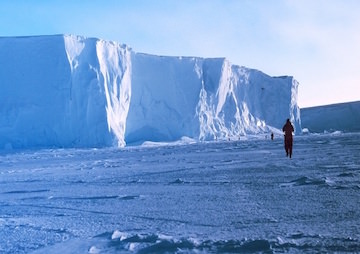
By Tim Radford / Climate News Network
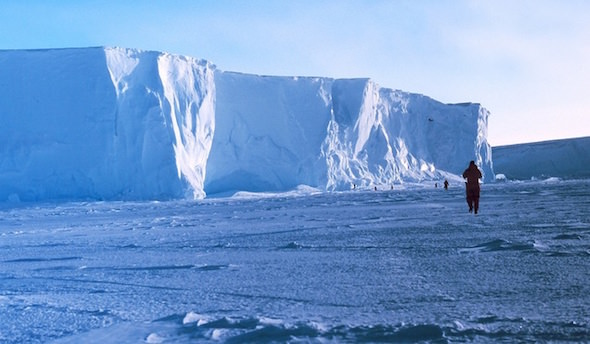
The towering ice cliffs of Antarctica could be at increasing risk of crumbling. (Michael Van Woert, NOAA NESDIS, ORA)
This piece first appeared at Climate News Network.
LONDON — Climate scientists may have collectively underestimated the hazards of sea level rise. If greenhouse gas emissions continue to increase at their present rate, then, in Antarctica alone, enough ice will have run into the sea by the end of the century to raise the high tide mark worldwide by a metre.
And if the process continues, then by 2500 enough of Antarctica’s massive ice cap will have melted to raise sea levels by 15 metres.
The new finding focuses only on revised calculations for Antarctica. It does not count the melting from all the world’s mountain glaciers, the permafrost, or the Greenland ice cap, and it is concerned principally with the immediate impact of global warming. But the consequences are ominous enough.
“This could spell disaster for many low-lying cities,” says Robert DeConto, professor of climatology at the University of Massachusetts-Amherst. “For example, Boston could see more than 1.5 metres of sea level rise in the next 100 years. But the good news is that an aggressive reduction in emissions will limit the risk of major Antarctic ice retreat.”
Professor DeConto and co-author David Pollard, senior scientist at Penn State University’s Earth and Environmental Systems Institute, publish their new simulations in Nature and begin by thinking about sea level rise long before the emergence of humankind, let alone human civilisation.
Waiting for action
“We looked at the long-standing problem posed by geological evidence that suggests sea level rose dramatically in the past, possibly by up to 10 to 20 metres around 3 million years ago in the Pliocene,” Dr Pollard says. “Existing models couldn’t simulate enough ice sheet melting to explain that.”
The scientists’ warning comes with an important proviso: this is what could happen if humans continue to burn fossil fuels at the present rate, to increase the carbon dioxide composition of the atmosphere, and to drive global warming. In Paris in December 195 nations vowed to take steps to contain climate change.
But promises have yet to become sustained action. And the predictions of climate change on which the Paris judgment was based were essentially compromise: a consensus around a median between the most and least hopeful calculations.
“We regard the results as worst-case envelopes of possible
future behaviour, and the mechanisms should be
considered seriously in future work.”
The two US scientists are not the only ones to see heightened dangers of south polar melting or to suggest that warming is happening faster, or that Antarctica’s glacial ice is running more swiftly into the sea than the consensus predicts.
They started with an exquisitely detailed model that embraced the physical processes that conserve ice or lead to its loss.
These include the fine detail of atmospheric warming and ice dynamics — what rainwater might do to the ice sheet that floats on the Southern Ocean and blocks the glacial flow from the land, for instance, and what makes ice cliffs collapse into the sea — along with a lot of lessons from the past.
Warmer ocean
Right now, what pushes the loss of ice is a warmer ocean, thinning the ice sheet from below. Melting water from the surface will penetrate the ice and cause it to crack.
When the ice shelves are gone, the glaciers can accelerate. But the continent bears a massive burden of ice: the remaining ice cliffs would be so huge they could not support their own weight, and these too would collapse at an increasing rate. Once the process begins, then atmospheric warming will prevent the formation of more ice.
“Although the future sea-level contribution in our model is greater than previously thought, it is based on credible mechanisms and is consistent with geologic evidence of past sea-level rise,” Dr Pollard says. “We regard the results as worst-case envelopes of possible future behaviour, and the mechanisms should be considered seriously in future work.”
Tim Radford, a founding editor of Climate News Network, worked for The Guardian for 32 years, for most of that time as science editor. He has been covering climate change since 1988.
Your support matters…Independent journalism is under threat and overshadowed by heavily funded mainstream media.
You can help level the playing field. Become a member.
Your tax-deductible contribution keeps us digging beneath the headlines to give you thought-provoking, investigative reporting and analysis that unearths what's really happening- without compromise.
Give today to support our courageous, independent journalists.

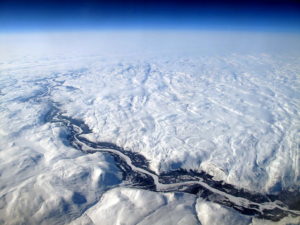
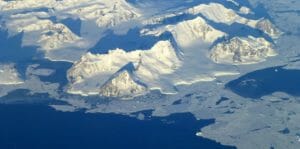

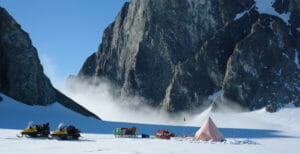
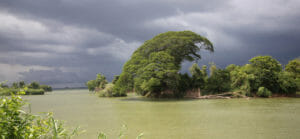
You need to be a supporter to comment.
There are currently no responses to this article.
Be the first to respond.